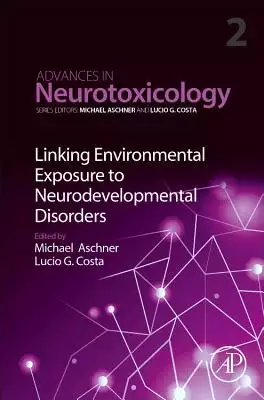Widen exposure的問題,我們搜遍了碩博士論文和台灣出版的書籍,推薦Wachler, Brian Boxer寫的 Influenced: The Impact of Social Media on Our Perception 和Aschner, Michael (EDT)/ Costa, Lucio G. (EDT)的 Advances in Neurotoxicology: Linking Environmental Exposure to Neurodevelopmental Disorders都 可以從中找到所需的評價。
這兩本書分別來自 和所出版 。
國立彰化師範大學 輔導與諮商學系 林清文所指導 廖苡婷的 兒童羞恥感對攻擊性的影響:情緒分化的調節效果 (2021),提出Widen exposure關鍵因素是什麼,來自於羞恥感、情緒分化、攻擊性、兒童。
而第二篇論文玄奘大學 應用心理學系碩士班 邱怡欣所指導 陳鳳儀的 中年人之正念與樂觀態度對於身體症狀的影響 (2020),提出因為有 中年人、正念態度、樂觀態度、身體症狀的重點而找出了 Widen exposure的解答。
Influenced: The Impact of Social Media on Our Perception

為了解決Widen exposure 的問題,作者Wachler, Brian Boxer 這樣論述:
Unpacks and pulls the curtain back on what happens to our brains and our behaviors each time we addictively engage social media and the influencers we encounter there. Individuals seeking to widen their tribes of friends, fans, and followers have an abundance of resources for building their digital
footprints and social media popularity. All of this seems well and good from the perspective of revenue, exposure, and perhaps ego-building, but what is the impact of this on the human brain and our behavior? Is anyone paying attention to the lurking side effects of the social media influencer revol
ution? As "Dr. Brian" Boxer Wachler--one of the world’s most esteemed authorities on human perception--reveals in Influenced: The Impact of Social Media on Our Perception, we are oblivious to the mental evolution that is already in process. Science is proving that our addictive reliance upon social
media and its influencers is having a demonstrable impact on how we think, feel, and perceive everything around us-- and even how we react to stimuli. One might think that a "Like" is nothing more than a split-second tap on a device. However, brain scans tell a different story. Our brains literally
light up with every buzz, ding, alert, and ring in anticipation of how our network is responding to us. As we tap away at our devices, we anxiously seek the approval of others--often people we don’t know. Influenced unpacks what happens to our brains and our behaviors each time we click "Like"; foll
ow an influencer; consume a video; share or reshare an article; post or repost a photograph; write a comment; pile on a trend;; just scroll for new content; and why do we keep coming back for more. Dr. Boxer Wachler includes his own social and medical findings and highlights them with interviews wit
h top influencers, the latest studies, and pop-culture anecdotes. Brian Boxer Wachler, MD, has devoted his career to the physical and mental intersection of how we perceive ourselves and the world around us. As the medical director of his eponymous institute in Beverly Hills and a staff physician
at the famed Cedars-Sinai Medical Center, he is one of the most sought-after surgeons in the world. Dr. Boxer Wachler has patented treatments, set industry guidelines, investigated procedures for the FDA, written numerous articles, and authored four medical books read by hundreds of thousands. He ha
s been featured by Vogue, The New York Times, Time, TEDx, and various national morning shows, including performing surgery live on The Today Show. He is a featured expert on The Doctors. Dr. Wachler lives in Los Angeles with his wife and twin teenage daughters
兒童羞恥感對攻擊性的影響:情緒分化的調節效果
為了解決Widen exposure 的問題,作者廖苡婷 這樣論述:
本研究旨在探討兒童羞恥感對攻擊性的影響,並以情緒分化為調節變項,探討情緒分化對於羞恥感與攻擊性的影響是否具調節效果。本研究採用問卷調查法,以全臺灣309位國小5、6年級兒童為研究對象。本研究使用「中文版-內外在羞恥感量表」、「兒童情緒覺察層次量表-台灣版」、「國小學童攻擊量表」為研究工具,並以描述性統計、相依樣本t檢定、獨立樣本t檢定、線性迴歸及階層迴歸進行統計分析。本研究的結果如下:一、兒童內化羞恥感的程度低二、兒童能分化出情緒,但無法以精確之情緒字詞作表達三、兒童的攻擊性程度低四、兒童的羞恥感能正向預測攻擊性五、兒童之情緒分化對羞恥感與攻擊性的影響不具調節效果本研究針對上述結果做討論,並
提出建議,以提供教育人員、輔導人員,及後續研究作參考。關鍵字 羞恥感 情緒分化 攻擊性 兒童
Advances in Neurotoxicology: Linking Environmental Exposure to Neurodevelopmental Disorders

為了解決Widen exposure 的問題,作者Aschner, Michael (EDT)/ Costa, Lucio G. (EDT) 這樣論述:
Advances in Neurotoxicology, Volume Two, addresses contemporary advances in neurotoxicology, with thematic volumes providing authoritative review articles on key issues in the field. Updates in this new volume include chapters on Air pollution and neurodegenerative diseases, Mercury and Parkinson
's disease, Pesticides and PD: current evidence, Aluminum and neurodegeneration, Microglia and neurodegeneration, Dietary factors, Mitochondria in neurodegeneration, and Manganese and neurodegeneration. Edited by leading experts, volumes are designed as in-depth overviews of the latest topic develop
ments that analyze the effect of varied chemical agents on the nervous system. It is an essential resource for researchers and graduate students alike.Includes, in one single publication, a selection of comprehensive reviews devoted to neurotoxicologyEdited by high-profile, leading academics in the
field, ensuring a quality publication for subscribersAims to widen the scope for participation by international contributors, researchers and editorial board members outside North AmericaServes a broad audience of university faculty, researchers and students, as well as the industry, drug developmen
t companies and the government
中年人之正念與樂觀態度對於身體症狀的影響
為了解決Widen exposure 的問題,作者陳鳳儀 這樣論述:
本研究旨在探討中年人正念與樂觀態度對身體症狀的影響,並瞭解正念、樂觀態度與身體症狀之三者之間是否具有相關性及中介效果。研究對象為臺灣385 位臺灣中年人,資料收集以網路問卷不具名方式進行問卷調查,並以「中文版-止觀注覺察量表」、「中文版-生活導向量表」與「症狀檢核表修訂版-身體化向度」為本研究工具。本研究結果發現如下:一、臺灣中年人正念態度與樂觀態度屬中等程度,身體症狀屬低等程度;二、正念態度與身體症狀呈負相關;三、正念態度與樂觀態度呈正相關;四、樂觀態度與身體症狀呈正相關;五、樂觀態度在正念態度與身體症狀具有部分中介效果,顯示樂觀態度在解釋正念態度對身體症狀僅有部分影響。綜合以上研究結果發
現在臺灣中年人在練習正念態度中若能覺察每刻經驗,不論是否特別樂觀態度都已具備保護能力,可以減少中年人的身體症狀。最後根據研究結果的發現提出未來研究以及臺灣中年人身心健康議題相關實務處遇之建議。